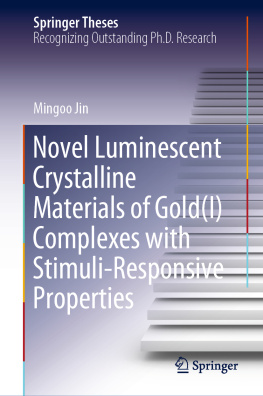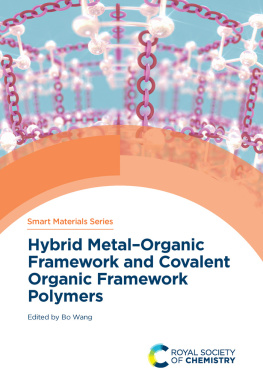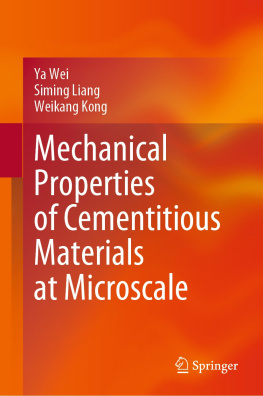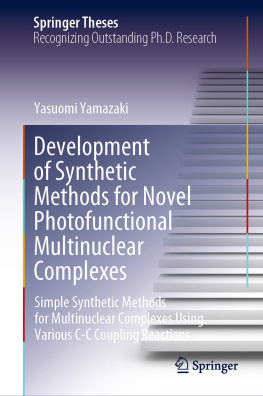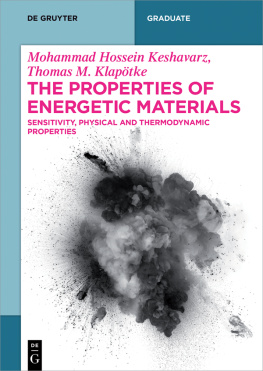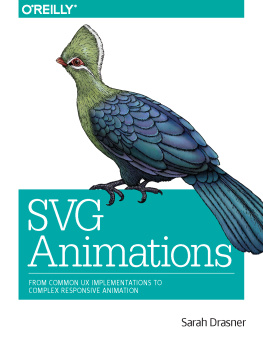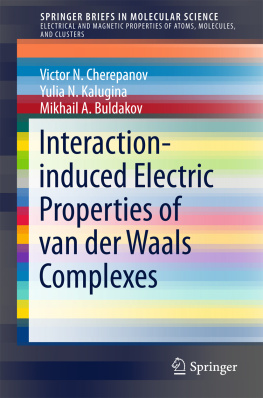Mingoo Jin - Novel Luminescent Crystalline Materials of Gold(I) Complexes with Stimuli-Responsive Properties
Here you can read online Mingoo Jin - Novel Luminescent Crystalline Materials of Gold(I) Complexes with Stimuli-Responsive Properties full text of the book (entire story) in english for free. Download pdf and epub, get meaning, cover and reviews about this ebook. year: 2020, publisher: Springer Singapore, genre: Romance novel. Description of the work, (preface) as well as reviews are available. Best literature library LitArk.com created for fans of good reading and offers a wide selection of genres:
Romance novel
Science fiction
Adventure
Detective
Science
History
Home and family
Prose
Art
Politics
Computer
Non-fiction
Religion
Business
Children
Humor
Choose a favorite category and find really read worthwhile books. Enjoy immersion in the world of imagination, feel the emotions of the characters or learn something new for yourself, make an fascinating discovery.
- Book:Novel Luminescent Crystalline Materials of Gold(I) Complexes with Stimuli-Responsive Properties
- Author:
- Publisher:Springer Singapore
- Genre:
- Year:2020
- Rating:4 / 5
- Favourites:Add to favourites
- Your mark:
- 80
- 1
- 2
- 3
- 4
- 5
Novel Luminescent Crystalline Materials of Gold(I) Complexes with Stimuli-Responsive Properties: summary, description and annotation
We offer to read an annotation, description, summary or preface (depends on what the author of the book "Novel Luminescent Crystalline Materials of Gold(I) Complexes with Stimuli-Responsive Properties" wrote himself). If you haven't found the necessary information about the book — write in the comments, we will try to find it.
Mingoo Jin: author's other books
Who wrote Novel Luminescent Crystalline Materials of Gold(I) Complexes with Stimuli-Responsive Properties? Find out the surname, the name of the author of the book and a list of all author's works by series.
Novel Luminescent Crystalline Materials of Gold(I) Complexes with Stimuli-Responsive Properties — read online for free the complete book (whole text) full work
Below is the text of the book, divided by pages. System saving the place of the last page read, allows you to conveniently read the book "Novel Luminescent Crystalline Materials of Gold(I) Complexes with Stimuli-Responsive Properties" online for free, without having to search again every time where you left off. Put a bookmark, and you can go to the page where you finished reading at any time.
Font size:
Interval:
Bookmark:

Aims and Scope
The series Springer Theses brings together a selection of the very best Ph.D. theses from around the world and across the physical sciences. Nominated and endorsed by two recognized specialists, each published volume has been selected for its scientific excellence and the high impact of its contents for the pertinent field of research. For greater accessibility to non-specialists, the published versions include an extended introduction, as well as a foreword by the students supervisor explaining the special relevance of the work for the field. As a whole, the series will provide a valuable resource both for newcomers to the research fields described, and for other scientists seeking detailed background information on special questions. Finally, it provides an accredited documentation of the valuable contributions made by todays younger generation of scientists.
They must be written in good English.
The topic should fall within the confines of Chemistry, Physics, Earth Sciences, Engineering and related interdisciplinary fields such as Materials, Nanoscience, Chemical Engineering, Complex Systems and Biophysics.
The work reported in the thesis must represent a significant scientific advance.
If the thesis includes previously published material, permission to reproduce this must be gained from the respective copyright holder.
They must have been examined and passed during the 12 months prior to nomination.
Each thesis should include a foreword by the supervisor outlining the significance of its content.
The theses should have a clearly defined structure including an introduction accessible to scientists not expert in that particular field.
More information about this series at http://www.springer.com/series/8790

This Springer imprint is published by the registered company Springer Nature Singapore Pte Ltd.
The registered company address is: 152 Beach Road, #21-01/04 Gateway East, Singapore 189721, Singapore
Near a decade, research on solid-state luminescent molecular materials exhibiting alterations of photo-physical properties by external stimuli, such as heat, vapor, and mechanical stress, has attracted many interests because of its high potential not only to generate new functional sensor or security materials but also to have fundamental scientific insight on solid-state physical chemistry. Generally, solid-state luminescence has many differences to luminescence properties in solution phase. For example, excited state of luminophore will experience large steric effect in solid state comparing to those in solution, resulting in different luminescence pathways. Furthermore, luminophores are densely packed in solid state, which can form intermolecular interactions, such as - stacking, generating different electronic environments comparing to those in solution phase. In other words, photoluminescent properties in solid state are strongly affected by intermolecular packing mode and/or molecular conformation, as well known as crystal structure. Thus, exploring a rational design to control the crystal structure of luminescent materials correlating the external stimulation would highly contribute to develop novel stimuli-responsive luminescent properties. For development of the stimulus-responsive solid-state materials, generating multiple phases and interconversion between the phases via stimulations should be designed. In the case of molecular crystals, molecular structure is highly correlated with physical properties of the crystals, as well as molecular arrangement and electronic environment.
The Ph.D. thesis of Mingoo Jin explores several molecular designs of luminophore which can form luminescent crystals exhibiting mechanical, vapor, or thermal stimuli-responsive properties. The main strategy is hybrid of luminescent properties of gold(I) complex and structural factors of biaryl moiety or dumbbell-shaped molecule which could afford high chance to control molecular arrangement and/or conformation in solid state.
In general, luminescence properties of gold(I) complexes originate from ligands, especially their geometry around the gold atom, or from the presence of metalmetal interaction, so-called aurophilic interaction. According to these features, the electronic environment of gold(I) complex can easily be influenced by internal or external changes, molecular conformations, the dipole moment of neighboring systems, and alternative molecular arrangements, resulting that the luminescence properties can be altered by such a change of external or internal environment of the gold(I) complex.
Biaryl group possessing two aryl plans connected by CC bonding can form various geometries via rotatable aryl plan. Such a structure feature may enable to realize structural variation of molecule in a crystalline phase. Furthermore, biaryl structure can exhibit axial chirality. For instance, 2,2-disubstituted binaphthyl compounds can exhibit stable axial chirality as (R) and (S) conformations. And, 2-mono-substituted biphenyl compounds can adopt (M) or (P) conformations based on their helical chirality. In solution phase, these conformers rapidly interconvert between each other, but in the solid state, the conformers should be trapped in some conformation by the intermolecular packed environment, resulting in molecular or crystalline chirality. This chirality in the solid state should guide to design concept for controlling molecular arrangement and/or conformations in solid phase.
Font size:
Interval:
Bookmark:
Similar books «Novel Luminescent Crystalline Materials of Gold(I) Complexes with Stimuli-Responsive Properties»
Look at similar books to Novel Luminescent Crystalline Materials of Gold(I) Complexes with Stimuli-Responsive Properties. We have selected literature similar in name and meaning in the hope of providing readers with more options to find new, interesting, not yet read works.
Discussion, reviews of the book Novel Luminescent Crystalline Materials of Gold(I) Complexes with Stimuli-Responsive Properties and just readers' own opinions. Leave your comments, write what you think about the work, its meaning or the main characters. Specify what exactly you liked and what you didn't like, and why you think so.

